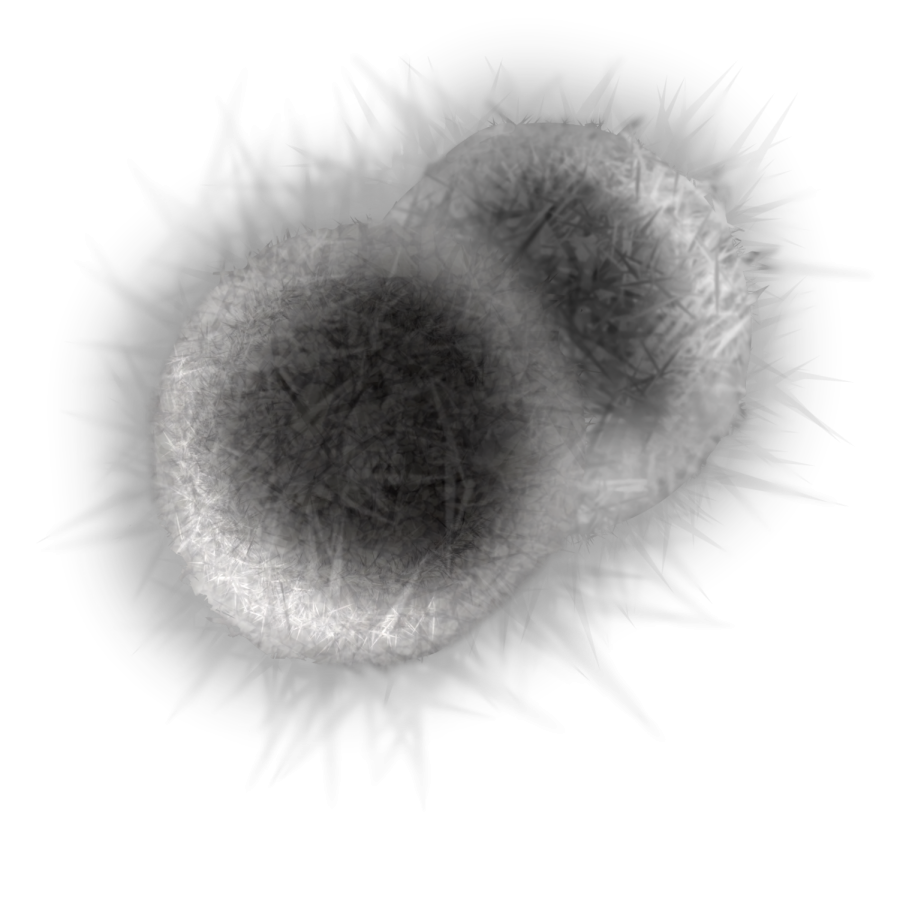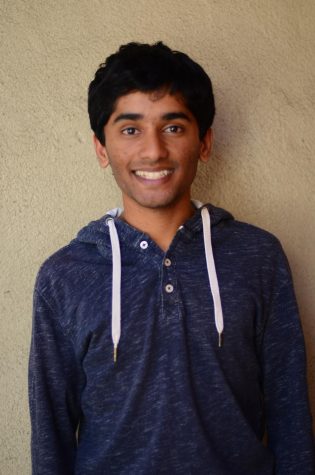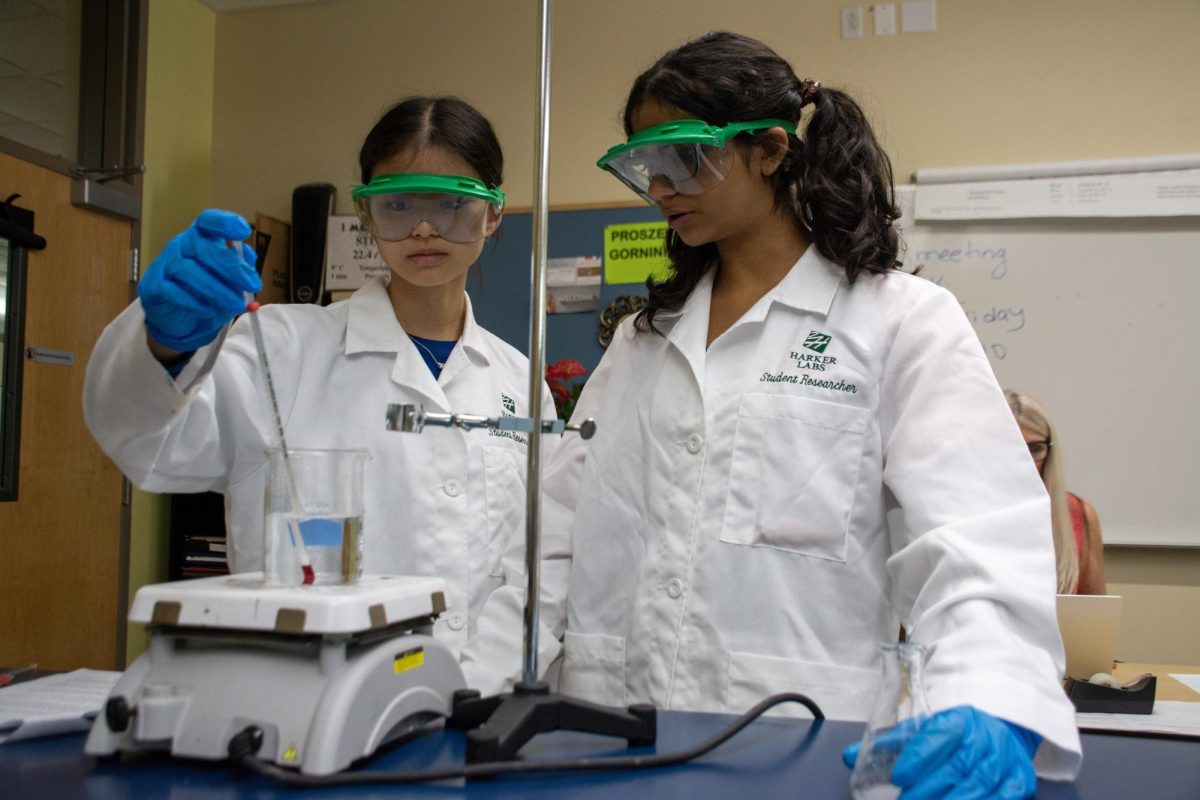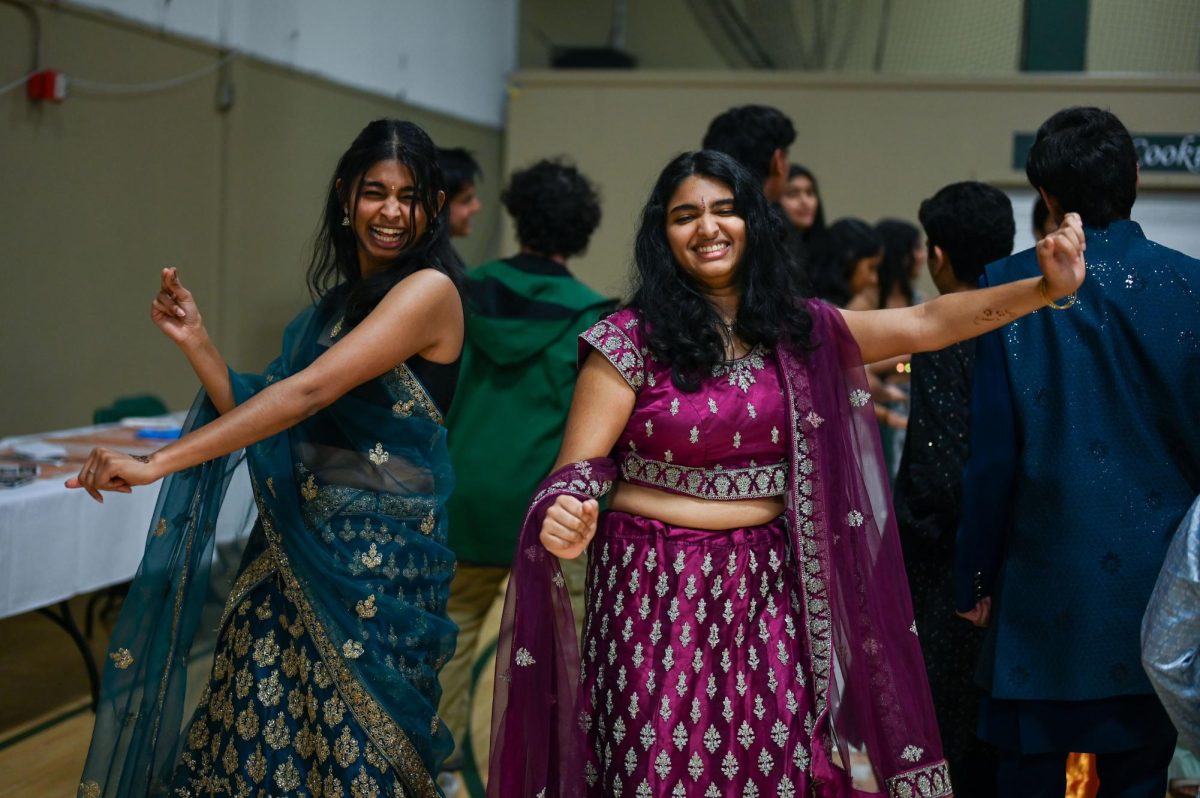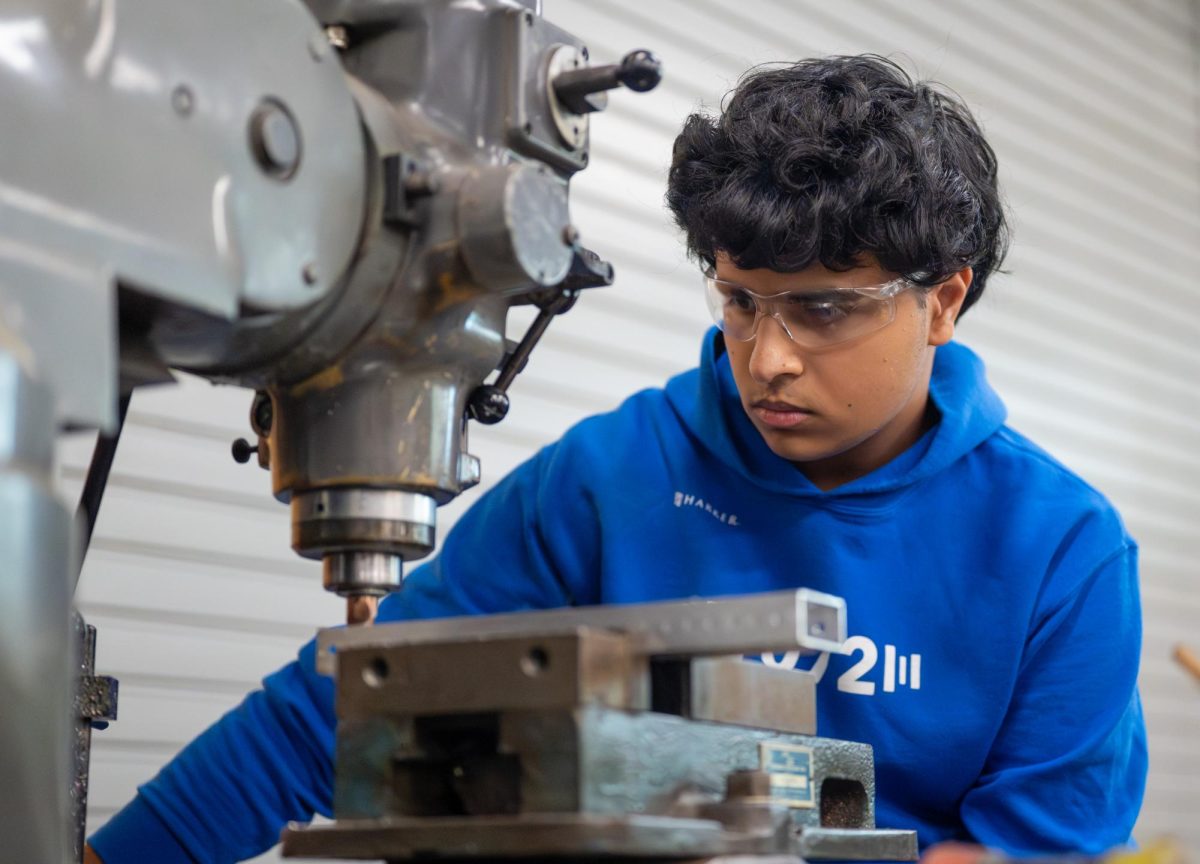Two different signals detect neutron star collision in historic scientific moment
A graphical rendering of two neutron stars colliding. Scientists detected a neutron star collision for the first time in August and presented their findings on Oct. 16.
November 18, 2017
Scientists announced the discovery of a neutron star collision, which was detected on Aug. 17, in news conferences throughout the world on Oct. 16. Reports written by over 3,500 astronomers on the historic event were released, providing confirmations on previous theories and opening up new pathways of thinking about astrophysics.
Neutron stars are the core remnants after the supernovae of large stars, made when the protons and electrons are compressed with so much force that they form neutrons, as described by Eric Peng, a professor of astrophysics at Peking University in Beijing. The resultant body is an extremely dense mass about the size of a city.
The collision of the neutron stars, resulting in an explosion known as a kilonova, provided insights into the formation of heavy metals and marked the first time scientists observed an event using two different types of signals: gravitational and electromagnetic.
Neutron star mergers release enough energy to create elements heavier than iron, spewing clouds of debris containing gold, platinum and other chemical elements mixed with radioactive waste. The clouds then expand rapidly, producing masses of these elements that can be hundreds of times the mass of planet Earth.
“It kind of answers one of these age-old questions about the origin of elements [heavier than iron],” Peng said. “People’s wedding rings or gold necklaces and bracelets — all that stuff was made in neutron star mergers — we now know that to be true.”
Moreover, the possibility of a neutron star merger and of an event emitting two distinct types of waves had only been a theoretical idea until this finding.
“Previous to this observation, we had basically only had theories that said, well, you should have this big explosion, and in this big explosion you should see light signatures,” Peng said. “What’s really exciting about this is that…it’s the first gravitational wave detection where we could actually see it with photons.”
The impact of the explosion sent ripples in spacetime to earth, known as gravitational waves. Einstein theorized the existence of these waves in 1916, but scientists only proved his theories in entirety in 2015 when the Laser Interferometer Gravitational-Wave Observatory (LIGO) detected gravitational waves from a black hole merger, for which the founders of the observatory earned the Nobel Prize in Physics last month.
The gravitational waves from the kilonova were picked up on Aug. 17 by Virgo, an observatory based in Italy, and the pair of U.S.-based detection systems at LIGO. Each observatory uses an interferometer system designed for use with gravitational waves; by watching for fluctuations in a precise measurement of distance between a set of mirrors, astronomers can tell when a gravitational wave is passing by.
Two seconds before the gravitational waves were detected, a National Aeronautics and Space Administration telescope picked up waves of electromagnetic radiation in the form of light, gamma rays and radio waves, helping scientists to pinpoint the location of the neutron star collision.
“Astronomical objects send off signals, and two very different kinds of signals that were received, and that’s what’s special about this event,” said Dr. Raja Guhathakurta, professor of astronomy at University of Santa Cruz. “They’re calling it the birth of multi-messenger astronomy.”
Realizing that these occurrences matched previous predictions about neutron star mergers, scientists across the globe used telescopes to observe the areas that were emitting these waves. Though neutron stars themselves cannot be detected by normal light telescopes, they do emit light when they come together.
Searching for this predicted visual component, astronomers began to scan the skies after news of the neutron star collision to find the exact spot where the a visual representation of the explosion could be seen. Within 12 hours, the One-Meter Two-Hemisphere collaboration, led by principal investigator Ryan Foley, were able to pinpoint the location of the optical element using the Swope telescope at the Las Campanas Observatory in Chile, seeing a distinctive bright spot in their field of view.
“In terms of what we’ve learned and what theories we’ve confirmed, it’s a long list,” Foley said. “It’s hard to understate how important this is.”
This piece was originally published in the pages of the Winged Post on November 16, 2017.


















![“[Building nerf blasters] became this outlet of creativity for me that hasn't been matched by anything else. The process [of] making a build complete to your desire is such a painstakingly difficult process, but I've had to learn from [the skills needed from] soldering to proper painting. There's so many different options for everything, if you think about it, it exists. The best part is [that] if it doesn't exist, you can build it yourself," Ishaan Parate said.](https://harkeraquila.com/wp-content/uploads/2022/08/DSC_8149-900x604.jpg)




![“When I came into high school, I was ready to be a follower. But DECA was a game changer for me. It helped me overcome my fear of public speaking, and it's played such a major role in who I've become today. To be able to successfully lead a chapter of 150 students, an officer team and be one of the upperclassmen I once really admired is something I'm [really] proud of,” Anvitha Tummala ('21) said.](https://harkeraquila.com/wp-content/uploads/2021/07/Screen-Shot-2021-07-25-at-9.50.05-AM-900x594.png)







![“I think getting up in the morning and having a sense of purpose [is exciting]. I think without a certain amount of drive, life is kind of obsolete and mundane, and I think having that every single day is what makes each day unique and kind of makes life exciting,” Neymika Jain (12) said.](https://harkeraquila.com/wp-content/uploads/2017/06/Screen-Shot-2017-06-03-at-4.54.16-PM.png)








![“My slogan is ‘slow feet, don’t eat, and I’m hungry.’ You need to run fast to get where you are–you aren't going to get those championships if you aren't fast,” Angel Cervantes (12) said. “I want to do well in school on my tests and in track and win championships for my team. I live by that, [and] I can do that anywhere: in the classroom or on the field.”](https://harkeraquila.com/wp-content/uploads/2018/06/DSC5146-900x601.jpg)
![“[Volleyball has] taught me how to fall correctly, and another thing it taught is that you don’t have to be the best at something to be good at it. If you just hit the ball in a smart way, then it still scores points and you’re good at it. You could be a background player and still make a much bigger impact on the team than you would think,” Anya Gert (’20) said.](https://harkeraquila.com/wp-content/uploads/2020/06/AnnaGert_JinTuan_HoHPhotoEdited-600x900.jpeg)

![“I'm not nearly there yet, but [my confidence has] definitely been getting better since I was pretty shy and timid coming into Harker my freshman year. I know that there's a lot of people that are really confident in what they do, and I really admire them. Everyone's so driven and that has really pushed me to kind of try to find my own place in high school and be more confident,” Alyssa Huang (’20) said.](https://harkeraquila.com/wp-content/uploads/2020/06/AlyssaHuang_EmilyChen_HoHPhoto-900x749.jpeg)



